The prior model
Bayesian Modeling with RJAGS

Alicia Johnson
Associate Professor, Macalester College
Course goals
Explore foundational, generalizable Bayesian models (eg: Beta-Binomial, Normal-Normal, and Bayesian regression)
Define, compile, and simulate Bayesian models using RJAGS
Conduct Bayesian posterior inference using RJAGS output
Bayesian elections: The prior

Bayesian elections: The prior

Bayesian elections: The prior
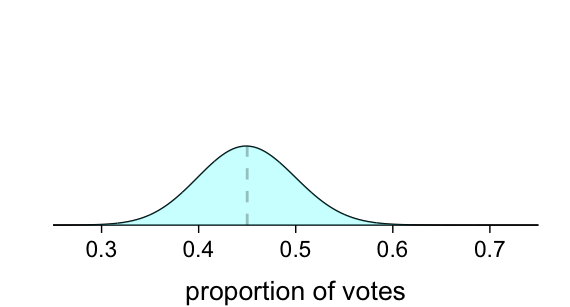
Bayesian elections: The data
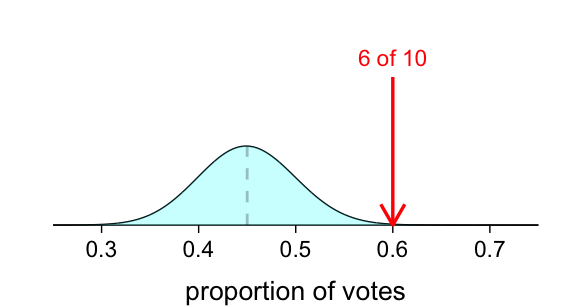
Bayesian elections: The posterior
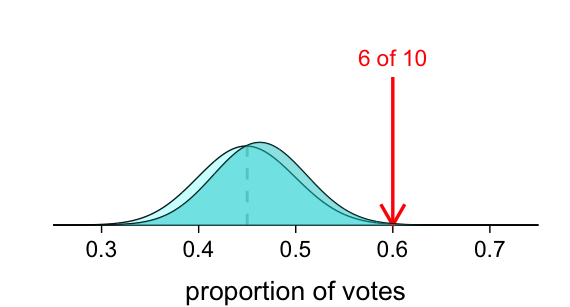
Bayesian elections: New data
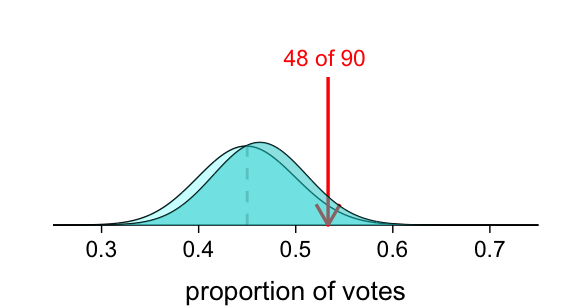
Bayesian elections: New posterior
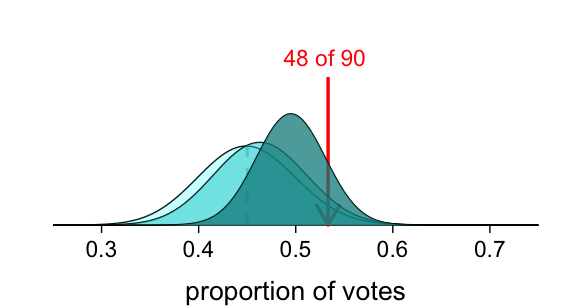
Bayesian elections: Newer data
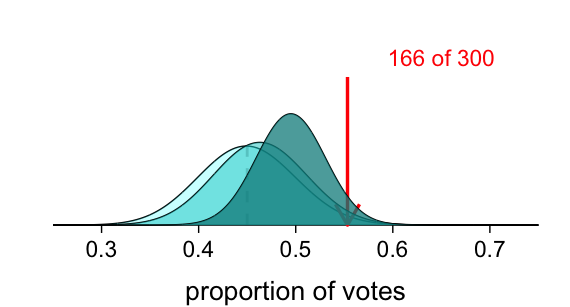
Bayesian elections: Newer posterior

Bayesian thinking
A Bayesian posterior model:
- Combines insights from the prior model & observed data
- Evolves as new data come in
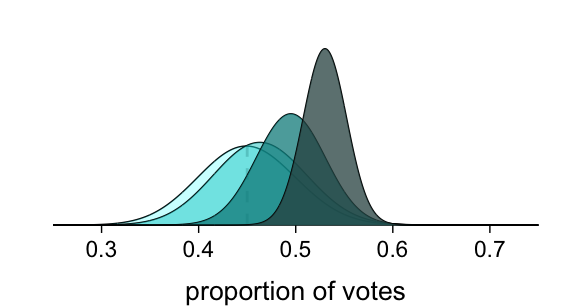
Building a prior model
- $p$ = proportion that support you
- $p$ is between 0 and 1
- The prior model for $p$ is a Beta distribution with shape parameters 45 and 55
$$p \sim \text{Beta}(45, 55)$$
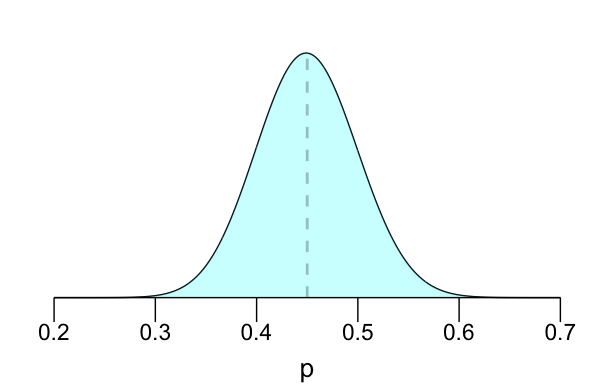
Tuning the prior
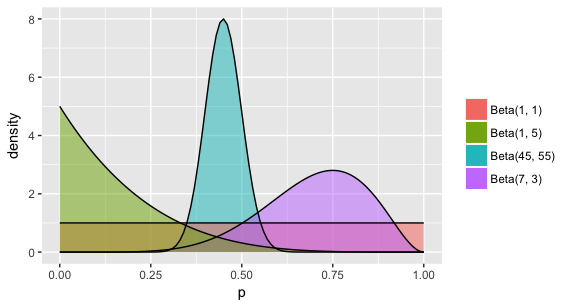
Let's practice!
Bayesian Modeling with RJAGS

